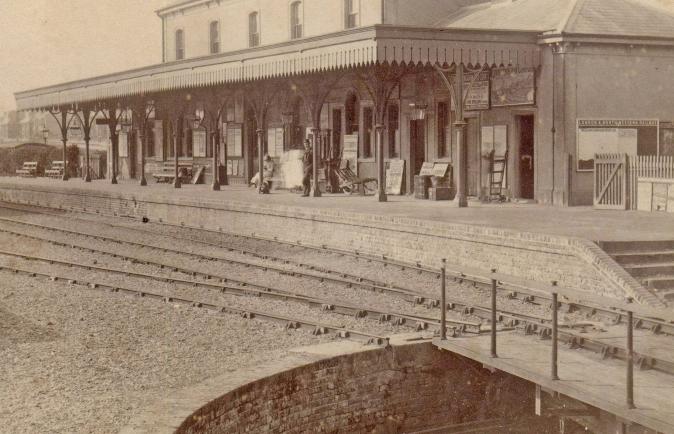
1864

SEAFORD MUSEUM COLLECTION
Seaford Station opens March 1864

SEAFORD MUSEUM COLLECTION
Seaford station looking towards the turntable & town
GETTING THE POINT ACROSS
The maker’s of locomotives always used best quality materials and often substituted more
expensive items than those required by John Chester Craven, Locomotive Superintendent for the L.B. & S.C.R. Generally this was to the Company’s advantage, although in the case of the footplate floor boards on the Standard Craven Passenger Locomotives 2-4-0’s, this was definitely not so, for pitch pine replaced oak planking. This was beautifully grained, and as long as it remained dry greatly improved the appearance of the footplate, but a drop of water turned the flooring into a skating rink. Craven discovered this when travelling on loco No. 187 from Croydon to Brighton with the 4 p.m. express in c1864.
Near Horley track repairs necessitated the up line being used for several hundred yards and
when the driver entered the loop at 25 to 30 M.P.H. the whole party slid across the footplate
to end up in an untidy pile of arms and legs, the floorboards having been well swept and
watered in honour of Craven’s presence. Scrambling hurriedly to their feet, all forgot that the loop has two ends and as the engine it the second crossover the jerk sent them again flying across the footplate. Craven broke his collar bone and the fireman his wrist, which left the driver to keep the train running to Brighton. First-hand knowledge is a wonderful thing, and within ten days all of the class had oak planking, which, if less decorative, gave firm footing come rain or shine.
* Depot of loco-men not known
Bognor (Bog) 1864-1962